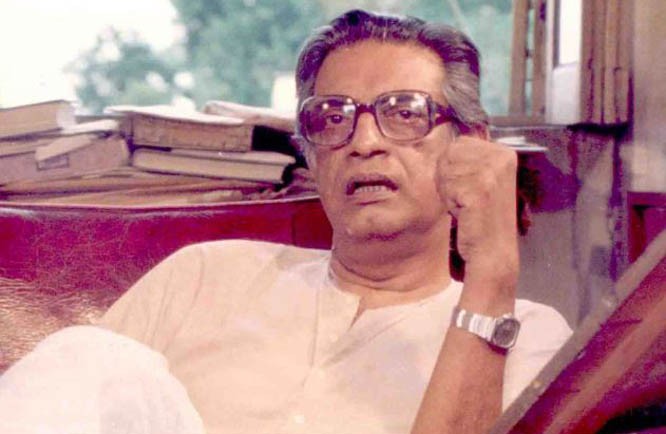
Bhaskar Chattopadhyay’s novel, based on Satyajit Ray’s film, is written with flair and candour

Any attempt to novelise a film invites cruel comparisons and a string of doubts. But Bhaskar Chattopadhyay’s novel ‘Nayak: The Hero’, which is based on Satyajit Ray’s magnum opus from 1966, defies the need for a harsh scrutiny. Using the original screenplay as a blueprint, the novel doesn’t deviate from the filmmaker’s intention as it recreates familiar cinematic moments on the printed page.
Like Ray’s films, Nayak: The Hero creates the illusion of simplicity that is shattered once the intricacies of the plot come to the fore. Fuelled by the same eye for detail that Manik-da brought to the film, the book hearkens back to the black-and-white monotones in which the yesteryears classic first graced the silver screen. But the novel is driven by more than just a touch of nostalgia.
As expected, the plot is deceptively simple. Arindam Mukherjee, a Bengali cinema superstar, takes a train from Calcutta to Delhi to receive a national award. In the film, Ray used this premise to explore the hidden complexities of his protagonist. Chattopadhyay’s novel attempts to do the same by presenting a nuanced portrait of the matinee idol.
Arindam’s narcissism is apparent from the very outset of the novel as he meticulously grooms himself in a way that makes his stardom "look easy and an intrinsic part of his personality". But fame is a fickle companion that can easily become your sole contender. Although Arindam has managed to carve a niche for himself in the film fraternity, his smug confidence is little more than a façade as he is haunted by the past and even bleaker present.
The protagonist’s battle against the arc lights that have brought him success and a few regrets is a discreet one. When he boards the train to Delhi, Arindam doesn’t realise that he is carrying with him a suitcase of memories that desperately need to be unpacked and, in some instances, discarded.
An opportunity to eject these demons from his mind presents itself when Aditi Sengupta, the editor of an up-and-coming magazine for modern women, approaches Arindam in the train for an interview. The young editor initially wants to gain more subscribers for her publication through a high-profile interview with the matinee idol. But as the conversation flows and Arindam’s thin veneer begins to slip, her cold demeanour recedes and she transforms into the cinema star’s confidante. With each question, Aditi dissects the inner turmoil that he has skilfully concealed from the public eye. While Aditi’s line of questioning is neither salacious nor intrusive, it succeeds in reminding Arindam about how he has disappointed and betrayed many of his closest friends.
The film relied heavily on flashbacks and dream sequences that had a strong cinematic effect. It is practically difficult to replicate these scenes through the written word without making creative compromises. Instead of painstakingly recreating these moments and undermining the narrative simplicity that has become synonymous with Ray’s work, Chattopadhyay’s novel seamlessly weaves these moments into Aditi and Arindam’s conversation. Although this may not have the desired impact for some readers, each anecdote is depicted in immaculate detail and doesn’t lose its essence.
Ray was frequently criticised for creating slow-paced films that focused on characters rather than dramatic elements to push the story forward. For those who aren’t acquainted with the film, the novel might appear to move sluggishly toward its climax. In these circumstances, it is best to remember that no character is trivial. When the focus momentarily veers away from Arindam and shifts towards the other passengers on the train, most readers might be tempted to skip ahead to the conversation between the two characters. At this stage, we must resist the temptation to skim through the text as these seemingly mundane interactions capture the flavour of the times and set the rhythm for Arindam’s discussion with Aditi.
Chattopadhyay succeeds in fleshing out the main characters with great skill and sophistication. In the film, Arindam and Aditi were played by Uttam Kumar and Sharmila Tagore, respectively. It is only befitting that readers who carry the memories of the spellbinding performances delivered by both actors in the film will find traces of Sharmila and Uttam in the pages of Chattopadhyay’s novel. Despite the universality of the plot that renders Arindam’s journey a timeless tale and the sense of humanism that lends empathy where it is due, the film is likely to have a more enduring impact than the novel.
Written with flair and refreshing candour, the novel aims to broaden people’s horizons and direct them towards the film so they can also appreciate Ray’s prowess as a filmmaker. In addition to serving as a point of access to Ray’s work for a non-Bengali readership, Nayak: The Hero offers insights into the internal strains and struggles faced by cinema actors that still ring true.
Nayak: The Hero
Author: Satyajit Ray
Novelisation: Bhaskar Chattopadhyay
Publisher: HarperCollins
Pages: 240